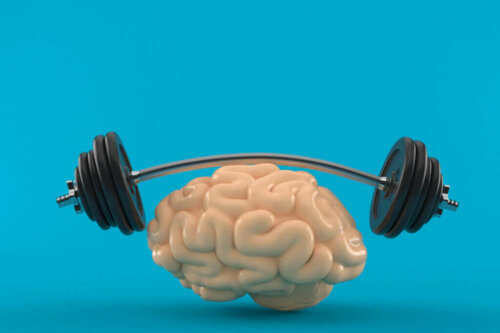Hamstring Injuries: Treatment and Recovery

Hamstring tears are among the most common injuries in athletes. An abrupt elongation or a sudden contraction can cause severe hamstring injuries. Fibrillary ruptures also occur as a result of a greater stretching than it can perform, or a contusion.
The type of treatment you should follow to get your hamstring back in the game depends on the level of severity of the injury. However, most of the time it’s a very painful process.
Treatment according to the severity of hamstring tears
The first thing that should concern doctors and athletes when a hamstring injury happens is to relieve the pain. For this, analgesic intake and rest are indicated.
Another thing you can do to reduce swelling is to place cold compresses in the area and keep the leg elevated. Also, many doctors recommend using compression bandages to speed up recovery.
You might also like: Four Squat Tips for a Great Body and Zero Risk of Injury
Treatment for grade one hamstring injuries
In a grade one hamstring injury, the athlete has their usual mobility with a slight tear but feels discomfort and inflammation. For recovery, ice is applied periodically and doctors recommend resting with the leg raised against a wall. During the first three days, it’s recommended to perform stretches without pain, tension, and active mobilization.
From the fourth day on, the treatment should include pool training with functional exercises. Gradually, more weight is incorporated into the actions performed by the athlete. After the eighth day following the injury, doctors recommend returning to your usual training, being careful not to overdo the hamstrings.
In addition, the training should be with a routine that goes from fast to slow speeds. Normally, an athlete is fully recovered eight to 10 days after the injury happens.
Treatment for grade two hamstring injuries
In grade two hamstring injuries, the athlete feels a constant discomfort but still has mobility. When you touch it the pain is sharper and you can see swelling in the area. When a tear of this type occurs, normally the athlete will stop training almost immediately, as the pain is usually sharp and piercing.

The most basic measures for grade two injuries are applying ice and using crutches to avoid putting pressure on the injured leg. During the first three days, the treatment consists of pain-free mobilization and stretching. On the fourth day, the treatment adds isokinetic workouts.
During the second week of treatment, work begins with functional exercises and pool training. Some sports activities begin at this stage too. For a grade two hamstring injury, the estimated recovery period is 15 to 21 days.
Treatment for grade three hamstring injuries
As in the two previous cases, treatment in grade three starts with ice, crutches, painless mobilization and elevation of the injured leg. Treatment starts gradually, according to the possibilities of each person. On the fourth day, the athlete should add muscle electrostimulation sessions to the treatment.
In the second week, doctors recommend that the patient starts training and stretching under the supervision of a professional. In turn, at this stage of recovery, professionals highly recommend doing some pool workouts.
Discover more: Five Simple Stretches for Tight Hamstrings
Around this time, the athlete should start with some exercises related to their chosen sport. In addition, the remaining activities are enhanced to acquire power in the muscle.
The recovery period for athletes suffering from severe hamstring tears is one to three months. It’s very important to respect the limits your own body is placing during the whole treatment. Don’t overstretch the muscle. If you happen to feel pain, it’s advisable to leave the exercise to avoid aggravating the injury.
Tips for treating hamstring tears
These tips will help you if you’re an athlete who suffers from these types of tears:
- Applying a cold compress immediately after the muscle tears makes the blood circulate slowly and thus avoids inflammation. This will promote recovery and lessen the pain.
- Gentle drainage massages also decrease the inflammatory process and relieve pain.

- The placement of red clay over the injured area contributes to the circulation of accumulating liquids.
- The bandages prevent the hematoma from spreading and causing you more pain. Also, bandages make it pretty difficult to move your leg the wrong way again.
- Resting the first few days after the injury occurs is the key to avoiding pain. Resting will also help muscle fibers return to normal in less time.
- In the second phase of recovery, it’s advisable to apply heat to activate the circulation.
Some very severe hamstring tears seem to be the end of the world for an athlete. These injuries include those in which the muscles are disconnected from the tibia or pelvis. Don’t worry; modern technology has made huge progress in medicine.
You may need surgery to reconnect the tendon to the bone. The recovery process may be slower and more painful, but you’ll get good results if you follow the advice of a professional.
Hamstring tears are among the most common injuries in athletes. An abrupt elongation or a sudden contraction can cause severe hamstring injuries. Fibrillary ruptures also occur as a result of a greater stretching than it can perform, or a contusion.
The type of treatment you should follow to get your hamstring back in the game depends on the level of severity of the injury. However, most of the time it’s a very painful process.
Treatment according to the severity of hamstring tears
The first thing that should concern doctors and athletes when a hamstring injury happens is to relieve the pain. For this, analgesic intake and rest are indicated.
Another thing you can do to reduce swelling is to place cold compresses in the area and keep the leg elevated. Also, many doctors recommend using compression bandages to speed up recovery.
You might also like: Four Squat Tips for a Great Body and Zero Risk of Injury
Treatment for grade one hamstring injuries
In a grade one hamstring injury, the athlete has their usual mobility with a slight tear but feels discomfort and inflammation. For recovery, ice is applied periodically and doctors recommend resting with the leg raised against a wall. During the first three days, it’s recommended to perform stretches without pain, tension, and active mobilization.
From the fourth day on, the treatment should include pool training with functional exercises. Gradually, more weight is incorporated into the actions performed by the athlete. After the eighth day following the injury, doctors recommend returning to your usual training, being careful not to overdo the hamstrings.
In addition, the training should be with a routine that goes from fast to slow speeds. Normally, an athlete is fully recovered eight to 10 days after the injury happens.
Treatment for grade two hamstring injuries
In grade two hamstring injuries, the athlete feels a constant discomfort but still has mobility. When you touch it the pain is sharper and you can see swelling in the area. When a tear of this type occurs, normally the athlete will stop training almost immediately, as the pain is usually sharp and piercing.

The most basic measures for grade two injuries are applying ice and using crutches to avoid putting pressure on the injured leg. During the first three days, the treatment consists of pain-free mobilization and stretching. On the fourth day, the treatment adds isokinetic workouts.
During the second week of treatment, work begins with functional exercises and pool training. Some sports activities begin at this stage too. For a grade two hamstring injury, the estimated recovery period is 15 to 21 days.
Treatment for grade three hamstring injuries
As in the two previous cases, treatment in grade three starts with ice, crutches, painless mobilization and elevation of the injured leg. Treatment starts gradually, according to the possibilities of each person. On the fourth day, the athlete should add muscle electrostimulation sessions to the treatment.
In the second week, doctors recommend that the patient starts training and stretching under the supervision of a professional. In turn, at this stage of recovery, professionals highly recommend doing some pool workouts.
Discover more: Five Simple Stretches for Tight Hamstrings
Around this time, the athlete should start with some exercises related to their chosen sport. In addition, the remaining activities are enhanced to acquire power in the muscle.
The recovery period for athletes suffering from severe hamstring tears is one to three months. It’s very important to respect the limits your own body is placing during the whole treatment. Don’t overstretch the muscle. If you happen to feel pain, it’s advisable to leave the exercise to avoid aggravating the injury.
Tips for treating hamstring tears
These tips will help you if you’re an athlete who suffers from these types of tears:
- Applying a cold compress immediately after the muscle tears makes the blood circulate slowly and thus avoids inflammation. This will promote recovery and lessen the pain.
- Gentle drainage massages also decrease the inflammatory process and relieve pain.

- The placement of red clay over the injured area contributes to the circulation of accumulating liquids.
- The bandages prevent the hematoma from spreading and causing you more pain. Also, bandages make it pretty difficult to move your leg the wrong way again.
- Resting the first few days after the injury occurs is the key to avoiding pain. Resting will also help muscle fibers return to normal in less time.
- In the second phase of recovery, it’s advisable to apply heat to activate the circulation.
Some very severe hamstring tears seem to be the end of the world for an athlete. These injuries include those in which the muscles are disconnected from the tibia or pelvis. Don’t worry; modern technology has made huge progress in medicine.
You may need surgery to reconnect the tendon to the bone. The recovery process may be slower and more painful, but you’ll get good results if you follow the advice of a professional.
All cited sources were thoroughly reviewed by our team to ensure their quality, reliability, currency, and validity. The bibliography of this article was considered reliable and of academic or scientific accuracy.
- Marcelo Vargas. Rehabilitación de desgarros de isquiotibiales. Extraído de: http://www.marcelovargas.cl/protocolos/Rehabilitacio%CC%81n%20desgarro%20isquiotibiales.pdf
- Luis Gerardo Domínguez-Gasca, Luis Gerardo Domínguez-Carrillo. 2011. Ruptura total de isquiotibiales. Extraído de: http://www.medigraphic.com/pdfs/actmed/am-2011/am114e.pdf
- Servicios médicos del Fútbol Club Barcelona. 2009. Guía de Práctica Clínica de las lesiones musculares. Extraído de: https://www.raco.cat/index.php/Apunts/article/viewFile/164711/298964
This text is provided for informational purposes only and does not replace consultation with a professional. If in doubt, consult your specialist.








